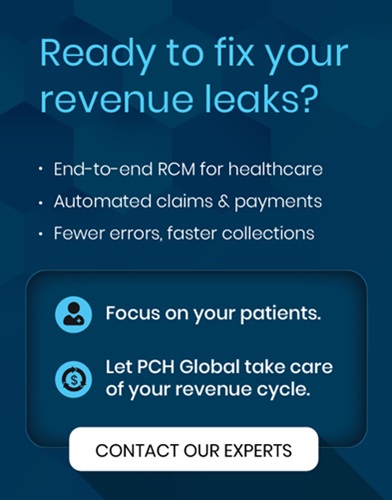
Americans are no strangers to insurance. In fact, most of us are required to have some form of insurance, whether it’s health, car, or home insurance. And while we may be familiar with the concept of insurance, the process of filing and receiving reimbursement for medical claims can be a bit of a mystery. In this article, we’ll attempt to demystify the process and explain how it works in the United States.
What is a Medical Claim?
A typical medical claim is a standard request for payment that your healthcare provider sends to your health insurance company that is essentially a list of services that were rendered for your treatment. For example: CAT scans, surgery, therapy, medicines, etc.
This system assures three things:
- The doctors or the medical institution gets paid
- The insurance company pays covered benefits
- You get billed for the remaining amount.
A claim is started the moment a patient checks in to an appointment or into the emergency room. Every minor detail is then recorded meticulously throughout the entire journey of a healthcare service until the patient receives and pays a final bill.
In rarer cases, a patient might need to see a doctor outside of their network of coverage. In such events, claims can be filed successfully by the patient themselves. But in most cases, claims are automatically submitted to your insurance company via the healthcare provider after an appointment or any other medical service.
Most people will agree that it is scary to know that sensitive medical data that belongs to you (or your family members) is handled by third-party companies like your healthcare provider and your insurance company. In an edge case where such crucial data falls into the wrong hands, it can very quickly be used against you or your family. A few minutes of googling can easily give you a fair idea about the dangers of losing privileged medical data to unknown sources. It is not uncommon to hear about cases where hackers have not only got access to medical records, but also wireless medical devices like cardiac pacemakers.
However, rest assured -newer and more stringent regulations in recent times require claims processing centers to follow strict HIPAA guidelines to further ensure the safety and security of such sensitive data. HIPAA stands for The Health Insurance Portability and Accountability Act of 1996. Common businesses that are regularly affected by HIPAA compliance and regulation include:
- Medical billing companies
- Practice management firms
- Third-party consultants
- Electronic Health Record (EHR) platforms
- Managed Service Providers (MSPs)
- IT providers
- Faxing companies
- Shredding companies
- Physical storage providers
- Cloud storage providers
- Email hosting services
- Attorneys
- Accountants
Also Read: What is PCH Global? A Better Way to Process Healthcare Paper Claims & Appeals?
The arduous journey of a claim when it goes through processing: Step by Step Guide
Healthcare claims processing goes through multiple verification phases to ensure a fairly high rate of accuracy and approval.
In reality, a claim’s journey begins even before you make an appointment. Insurance may not always cover all services or procedures; therefore, it is very important to review your health insurance to know what is covered, what isn’t covered, and where to go to get in-network care.
Once you learn what is covered, you may find a doctor or a medical institution and make an appointment. After you receive your care, the healthcare claims processing procedure starts its journey.
The following are events that take place before you receive your final bill:
- Your insurance company is sent a bill for charges of service, not including any charges paid via co-pay upon check-in.
- A claims processor will review the claim ensuring accuracy by comparing it against the insurance plan to validate the medical services that were rendered were in fact, covered by your insurance.
- If services received were covered by benefits, the insurance company will pay the claim based on coverage. They may pay the entire claim in full depending on your plan, otherwise, the remaining balance will be billed to you, the patient.
- All amounts will be validated and applied to deductible and out-of-pocket totals as they apply to your insurance plan. Those will be updated immediately.
- An explanation of benefits (EOB) is then sent to you which lays out a detailed list of services received, how much was covered by insurance, how much the provider paid, and what remains to be billed.
- A final bill will be sent to you for payment.
Before paying the claim, you must compare the EOB and final bill and ensure everything is accurate and billed correctly. Sometimes balances don’t match up and that could be due to a mismatched procedure code or other clerical error. PCH Global allows claims to be updated and fixed as necessary.
Claim Denied?: Common Challenges in Healthcare Claims Processing
An insurance claim may be denied for several reasons, but just because it was denied does not mean that it can’t be re-checked, re-submitted, and fixed.
If you receive a notification from your insurance company about healthcare claims processing being denied, call the appropriate billing provider to discuss the reasons behind the denial. Here are some common reasons for claims denial.
- The wrong claims forms were sent or filled out incorrectly
- The patient received treatments without pre-authorization
- The claim was filed too late
- Insurance isn’t covering the service
- Services received were deemed medically unnecessary
If any of the above is the reason a claim was denied, you must first attempt to resolve it with a phone call.
If it cannot be resolved, a claim can be made to go through a formal review with the insurance provider. They can look over the claim in greater detail.
Finally, after they have reached a conclusion, they will overturn the denial or decide that the claim can be re-submitted with the appropriate information to attempt to get it approved.
Need help submitting paper claims? Get in touch with our experts today or sign up for our free trial and submit your paper claims electronically or via our print-and-mail service.
How Long Does US Healthcare Take to Process a Claim?
The time it takes for the U.S. healthcare system to process a claim varies based on multiple factors, including the type of insurance, the complexity of the claim, and the efficiency of the provider’s billing system.A claim can take anywhere from a few days to several weeks to be processed on average.
Electronically submitted claims are typically faster to process, often taking between 7 to 14 days. Several insurance providers have systems that are automated that expedite these claim approvals, especially for routine procedures. Paper claims that require manual handling often take longer - approximately 30 to 45 days.
Delays can occur due to various reasons. There could be errors during submission, missing information or even need for additional documents. Some healthcare claims processing requires prior authorization or involve multiple insurers, for instance, coordination between primary and secondary coverage that can take longer than normal duration. If a claim is denied, the appeals process may add weeks or months to the timeline.
To speed up the process, patients should ensure that healthcare providers submit accurate information and verify their insurance coverage before treatment. Many insurers also offer online portals for tracking claim status, helping patients stay informed about their reimbursement timelines.
Best Practices for Efficient Healthcare Claims Management
Although claims management can be a complicated princess, here are some best practices that could help you navigate through it:
- Double-check patient information, procedure codes, and insurance details before submitting claims to minimize errors and rejections.
- Use electronic claims submission (EDI) to reduce processing time, improve accuracy, and minimize paperwork-related delays.
- Confirm coverage details before providing services to prevent claim denials due to expired or incorrect insurance information.
- Ensure proper use of CPT, ICD-10, and HCPCS codes to avoid claim rejections caused by coding errors.
- Utilize online insurance portals to track healthcare claims processing in real-time and address any issues promptly.
- Maintain direct contact with insurance providers to quickly resolve disputes, clarify coverage details, and follow up on delayed claims.
- Regularly educate billing teams on the latest healthcare regulations and best practices to ensure smooth claims processing.
- Analyze denied claims, identify patterns, and take corrective actions to minimize future denials and improve reimbursement rates.
Sources: google.com | en.wikipedia.org | reddit.com | compliancy-group.com | sdata.us | ncbi.nlm.nih.gov
DISCLAIMER: The information on this site is for general information purposes only and is not intended to serve as legal advice. Laws governing the subject matter may change quickly and XBP Global cannot guarantee that all the information on this site is current or correct. Should you have specific legal questions about any of the information on this site, you should consult with a licensed attorney in your area.
